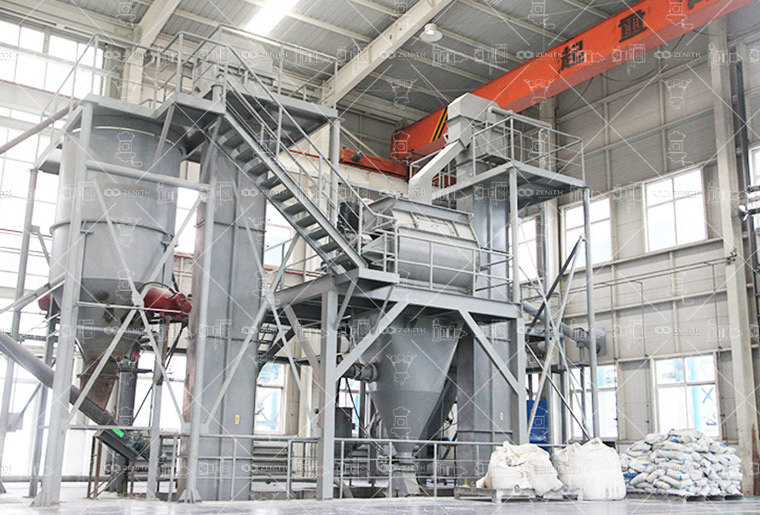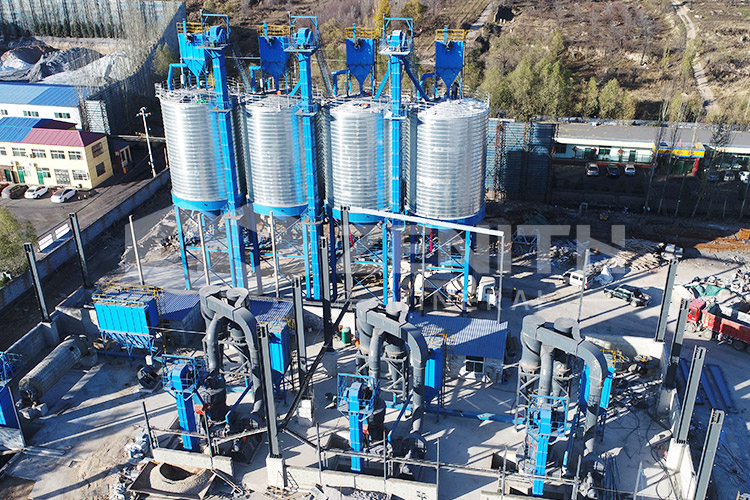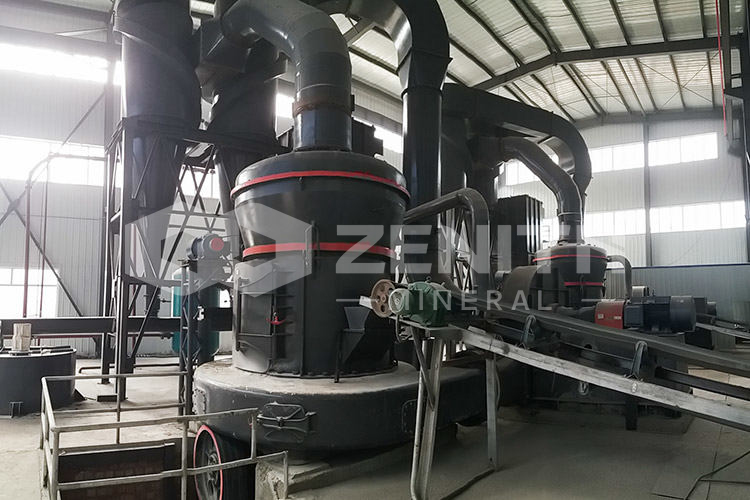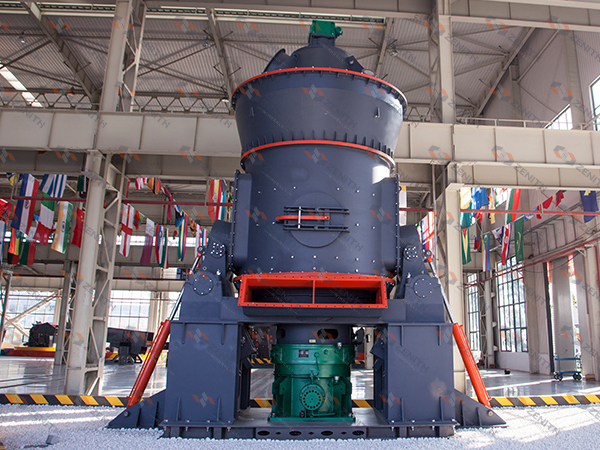European-style grinding mill working principle and powder production process
2025-11-20 00:57:54
In modern industrial processing, the transformation of raw materials into fine powders represents a critical stage across numerous sectors. Shanghai Zenith Machinery Co., Ltd., a hi-tech engineering group, has specialized in developing advanced grinding solutions that meet these diverse industrial demands. Our equipment, certified to ISO, CE, and CU-TR standards, processes materials from 1-3mm coarse powder down to an ultra-fine 3250 mesh micro powder, serving a global network across over 180 countries.
The core of this capability lies in our range of European-style grinding mills, including the MTW/MTM European Trapezium Mills, LM/LUM Vertical Mills, and the Raymond Mill. Each is engineered for specific applications but shares a common goal: efficient, controlled, and economical size reduction.
_1763571474543.jpg)
The Fundamental Grinding Principle
Despite their different designs, European-style grinding mills operate on a shared foundational principle: the application of mechanical force to fracture solid particles, combined with an integrated air classification system to separate particles by size. The process begins with pre-crushed raw material, typically with a feed size of 0-35mm, being continuously fed into the mill's grinding chamber.
In trapezium and vertical roller mills, the material is fed onto a rotating grinding table or disc. Centrifugal force throws the material outward under the path of heavy grinding rollers. These rollers, pressed against the material bed by mechanical or hydraulic systems, apply intense compressive and shear forces, crushing the particles. A key feature of this mechanism is 'inter-particle comminution,' where the bed of material itself acts as a grinding medium, enhancing efficiency and reducing wear.

The Integrated Air Classification System
What truly defines the modern grinding process is the seamless integration of grinding and classification. After initial crushing, the material is entrained in an airflow generated by an internal high-efficiency fan. This air stream carries the powder upwards into a powder selector or classifier.
Inside the classifier, a rotating turbine or impeller creates a precise centrifugal field. Fine particles, small enough to be considered 'finished product,' pass through this field and proceed to the collection system. Coarser particles, rejected by the classifier, fall back onto the grinding disc for further size reduction. This continuous internal recirculation ensures that energy is not wasted over-grinding already fine material, a significant advantage over traditional ball mills. Our MTW and MTM series mills, for instance, feature modular impeller adjustment devices, allowing operators to produce different product finenesses—from 80 to 400 mesh—simply by changing impellers.

Dust Collection and Environmental Compliance
The final stage of the process is product collection and air purification. The fine powder that passes the classifier is separated from the air stream in a cyclone powder collector. The cleaned air is then passed through a pulse-jet baghouse dust collector before being released into the atmosphere, ensuring the entire system operates with no visible dust emissions. This closed-loop system operates under negative pressure, a critical design feature that contains dust and meets stringent national and international environmental standards.
Key Mill Variations and Their Applications
MTW/MTM European Trapezium Mills: These are versatile workhorses for producing fine powder (80-400 mesh) used in agriculture, chemicals, paint, and water treatment. Their design offers up to 60% lower energy consumption than traditional ball mills and high induced-air efficiency of 85%.
LM Vertical Grinding Mill: Designed for large-scale, 24/7 operations in cement, mineral, and coal grinding plants. Its integrated design reduces footprint by 50% compared to ball mill systems and offers a high degree of automation for labor cost savings.
LUM Ultrafine Vertical Grinding Mill: This mill pushes the boundaries of fineness, producing powders from 325 to 2500 mesh. It integrates German powder separating technology and is ideal for high-end applications in plastics, PVC, and non-woven fabrics, reducing energy consumption by 30-50% compared to ordinary mills.
XZM Ultrafine Grinding Mill: A technologically advanced mill capable of single-classification grinding from 325 to 3000 mesh. Its simple internal structure minimizes downtime, and a VFD-controlled classifier allows for easy fineness adjustment from the control panel.
_1763571474552.jpg)
From coarse grinding with our Hammer Mill to ultra-fine processing with the LUM series, the underlying principle remains a harmonious combination of mechanical grinding force and precise aerodynamic classification. This synergy enables Shanghai Zenith to deliver grinding solutions that are not only highly efficient and adaptable but also environmentally responsible, empowering industries worldwide to transform raw materials into valuable, consistent powders.
_1763571474554.jpg)
Frequently Asked Questions
- What is the main advantage of a European-style grinding mill over a traditional ball mill?
The primary advantage is significantly higher energy efficiency, often 60% lower consumption for the same output, due to the integrated grinding and classification system which prevents over-grinding. - How is the fineness of the final powder controlled?
Fineness is precisely controlled by adjusting the speed of the classifier rotor, typically via a VFD on the control panel, or by changing the modular impellers in the powder selector. - Can these mills handle abrasive materials?
Yes. Critical grinding components like rollers and liners are made from high-quality, abrasion-resistant materials to ensure long service life even with abrasive feedstocks. - What is the typical operational noise level of these mills?
The mills are designed for low-noise operation, typically characterized by small vibration and low noise, contributing to a more eco-friendly and worker-friendly production environment. - How does the system ensure environmental protection?
The entire system operates under negative pressure and is equipped with high-efficiency pulse jet dust collectors, ensuring no dust spillage and that emissions meet strict environmental standards. - Is remote monitoring and operation possible?
Yes, many of our mills, particularly the LM Vertical Grinding Mill, are equipped with automatic control systems that allow for free switching between remote control and local operation. - What is the range of production capacities available?
Capacities vary by model, ranging from 0.5 T/H for ultra-fine mills like the XZM to over 330 T/H for large pre-grinding mills like the LM-Y series, covering a vast spectrum of industrial needs.








